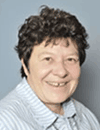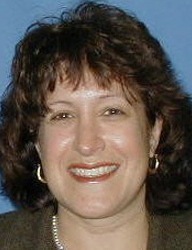08:00 | Conference Registration and Continental Breakfast in the Exhibit Hall |
|
Session Title: POC Diagnostics for Infectious Disease and Global Health. |
| |
|
Session Chairs: Nimmi Ramanujam, Ph.D. and Marya Lieberman, Ph.D. |
| |
09:00 | Paper Test Cards for Rapid Field Screening of Medications
Marya Lieberman, Professor, University of Notre Dame, United States of America
Serious problems with the quality of both human and animal medications have been found in most of the developing world. Although there is general agreement that removing low quality pharmaceuticals from the supply chain would be a good idea, there is no global program in place to monitor the quality of pharmaceuticals. Existing analytical methods for pharmaceuticals lack the combination of low cost, reliability, rapid turn-around, and scalability needed in low-resource settings. My research group has been trying to crack this problem by developing paper test cards to assay pharmaceutical dosage forms. The prototype test card incorporates a library of chemical tests that generates a chemical profile of active ingredients and excipients present in a pharmaceutical. We are now using the test cards at a project site in Kenya where we are attempting to find fake drugs using a random sampling process across 350 pharmacies in Western Kenya. In this talk, I will demo the test card, show how it performs with different types of substandard and falsified drugs, and discuss the manufacturing and image processing challenges of scaling up the test cards. |
09:30 |  | Keynote Presentation Rapid and Accurate Tuberculosis Diagnosis in Resource Poor Rural Areas
Anne Grobler, Professor, North-West University, South Africa
Despite the recent technological advancements in TB diagnosis, the logistical challenges of health care in developing countries, where TB is most prevalent and also most under-treated, has to be recognized. It is necessary to develop methods and technologies to identify TB, as wells as MDR and XDR TB strains. The technology must be readily applicable to point-of-care situations, it must be affordable and cannot require an advanced level of skill or laboratory settings. The smear negative culture positive group is of interest in a country like South Africa where HIV co-infection leads to paucibacillary. In these individuals, the sensitivity of smear microscopy, the most widely used technique at primary health care levels, is reduced. The development of a diagnostic system that is affordable (< than 4$ per assay), rapid (< than 1 hour), mobile and highly accurate will be discussed. The lysis efficiency of the developed system, in combination with a multiplex PCR protocol, resulted in an improved sensitivity of 99% for smear positive and 94% for smear negative cases. This diagnostic system is being evaluated by the National Health Laboratory System and in a mining hospital in South Africa and results of these studies will be presented. |
|
10:15 | Point-of-Care Optical Technologies for Women’s Health
Nimmi Ramanujam, Robert W. Carr Jr., Professor of Biomedical Engineering, Professor of Global Health, Director, Global Women's Health Technologies, Duke University, United States of America
Optical technologies have been exploited widely in the analytical chemical analysis of biological samples. While the benefits of optical spectroscopy and microscopy have long been known in the laboratory, over the past quarter century there has been increasing interest in the application of these techniques to intact human tissues. One of the distinct attributes of light is that is provides exquisite chemical specificity by interacting with a number of molecules that are already present in the tissue and thus has the capability to provide insight into functional, morphological and molecular contrast. Our objective is to exploit the wealth of physiological, metabolic, morphological and molecular sources of optical contrast to develop novel strategies that focus on cervical cancer screening and breast cancer diagnostics. |
10:45 | Coffee Break, Networking in the Exhibit Hall, and Meet the Exhibitors |
11:15 | Information Communication, Telemedicine Technologies & Physician Extenders: The Nucleus for our Nations Home Care
Craig Lehmann, Dean/Professor, Stony Brook University, United States of America
The objectives of this presentation are to address challenges and opportunities of the many needs of the countries priorities to deliver high impact interventions that will improve health outcomes for their aged citizens while strengthening health systems. Under this concept I will focus on the entire continuum of aging through the use of technologies, information communication and physician extenders while aging in place (home). This presentation will address the economics, education, social and health needs of citizens while residing in their home. Topics include electronic health record, chronic disease, home care, rural health care as well as present and future technologies. The presentation will address the major role for ICT in the public health arena (e.g., mobile technology) and its ability to offer health interventions, education and preventive strategies that can address the challenges of the those who have and those who do not now and in the future. |
11:45 |  | Keynote Presentation SIMPL-CD: Shrink Induced Manufacturing Platform for Low Cost Diagnostics
Michelle Khine, Professor, Dept. of Biomedical Engineering, Henry Samueli School of Engineering, University of California-Irvine, United States of America
The challenge of micro- and nano-fabrication lies in the difficulties
and costs associated with patterning at such high resolution. To make
such promising technology – which could enable pervasive health
monitoring and disease detection/surveillance – more accessible and
pervasive,
there is a critical need to develop a manufacturing approach such that
prototypes as well as complete manufactured devices cost only pennies. |
|
12:30 | Networking Lunch in the Exhibit Hall, Meet the Exhibitors, View Posters |
13:30 |  Technology Spotlight: Technology Spotlight:
Current Requirements in POC´s World: A Short Overview
Roberto Spricigo, OEM Manager, Point-of-Need, QIAGEN Lake Constance
Rapid point-of-care (POC) tests are emerging as tools for more efficient diagnosis and faster patient evaluation. They are becoming more meaningful to healthcare professionals since they provide reports and quantitative results. Here we explain the current requirements for POC devices for lateral flow tests and isothermal amplification methods.
|
|
Session Title: Emerging Approaches in the POC Space--POC Detection, POC Diagnostics, POC Treatment, and POC for Telehealth. |
| |
|
Session Chairs: Craig Lehmann, Ph.D. and Sridhar Iyengar, Ph.D. |
| |
14:00 | E-DNA: A Versatile Electrochemical Platform for Point-of-Care Molecular Measurement
Kevin Plaxco, Professor, University of California-Santa Barbara, United States of America
The ideal sensor will be sensitive, specific, versatile, small enough to hold in your hand, and selective enough to work even when faced with complex, contaminant-ridden samples. Given the affinity, specificity and generalizability of biomolecular recognition, biosensors have been widely touted for their potential to meet these challenging goals. To date, however, the translation of protein- and nucleic acid-binding events into convenient, highly selective sensing platforms has proven problematic. We have solved this problem by employing the ligand-induced folding of biopolymers as a robust means of transducing binding events into specific, easily detected outputs. Our electronic, folding-based sensors are rapid (minutes to seconds), sensitive (micromolar to femtomolar), and generalizable to an enormous range of protein, nucleic acid and small molecule targets. The sensors are also reagentless, reusable, and selective enough to be employed in blood serum, soil and other grossly contaminated samples. Because of their sensitivity, background suppression, operational convenience and impressive scalability folding-based biosensors appear ideally suited for diagnostics at the point of care and in the developing world. |
14:30 | The History of Point-of-Care Diagnostics: From the Ant to the Smartphone
Joel Ehrenkranz, Chief Medical Officer, i-calQ, United States of America
Indian physicians in 1500 BC described the first point-of-care diagnostic test and diagnostic testing took place at the bedside up to the 1970’s. Centralized clinical laboratories did not appear until the 1950’s and, until recently, aggressive business tactics and commercial interests enabled large corporations to dominate diagnostics. Recent advances in electronics and computer science are making centralized labs obsolete and smartphones are changing the practice of medicine. Point-of-care diagnostics is leading this medical technology revolution. This talk will provide a clinical perspective on point-of-care diagnostics and explain why many bioengineering innovations are doomed to fail. |
15:00 | Coffee Break and Networking with Exhibitors in the Exhibit Hall |
15:45 | Smartphone Biosensors for Health, Environment, and Food Safety
Brian Cunningham, Professor and Intel Alumni Endowed Chair, University of Illinois at Urbana-Champaign, United States of America
Since their introduction in 1997, “smart” mobile phones with internet connectivity, high resolution cameras, touch-screen displays, and powerful CPUs have gained rapid market acceptance driven by a combination of falling prices and increasingly sophisticated features. In addition, there is a growing ecosystem of applications that take advantage of the phone’s sensors, display, and connection to powerful computing and data storage capabilities that are available in the “cloud.” The built-in capabilities of smartphones can be further extended through the addition of accessories that enable the phone to sense different types of information. Incorporation of biosensing into mobile platforms is a potentially powerful development, as biological assay capabilities that have previously only been available through expensive laboratory-based instruments may be utilized by anyone. Such developments may help to facilitate the goal of “personalized medicine” in which home-based tests may be used to diagnose a medical condition, but with a system that automatically communicates results to a cloud-based monitoring system that alerts the physician when warranted. Low-cost portable biosensor systems integrated with mobile devices may also enable diagnostic technology that can be translated to resource-poor regions of the world for pathogen detection, disease diagnosis, and monitoring of nutritional status. Such systems, deployed widely, would be capable of rapidly monitoring for the presence of environmental contaminants over large areas, or tracking the development of a medical condition throughout a large population. This talk will summarize recent developments in the Cunningham Group at Illinois in the utilization of integrated smartphone cameras as a high resolution spectrophotometer that is capable of measuring ELISA assays, label-free photonic crystal biosensor assays, thin film chromatography, and fluorescence spectroscopy. Utilizing special purpose, l |
16:15 | How Computation can Create New Imaging and Sensing Tools for Point-of-Care Medicine
Euan McLeod, Research Scholar, University of California Los Angeles, United States of America
With the aid of computational techniques based on the physics of light, biomedical microscopy and imaging can be significantly enhanced relative to conventional microscopic methods. We discuss here several approaches that we have used to convert conventional cell phones and cell phone image sensors into high-performance microscopic imaging tools where images are computationally reconstructed from raw data. Like conventional microscopes, these new tools provide sub-micron resolution that can be used to differentiate normal from abnormal cells in tissue and blood samples, and have high enough sensitivity to detect single viruses and nanoparticles. Beyond the capabilities of conventional microscopes, these computational approaches also provide the additional advantages of an ultra-large field of view, low cost, ease of portability, and the potential for easy connectivity for telemedicine. One particular set of results we will highlight is the detection and imaging of single viruses and nanoparticles smaller than 50 nm over a field of view of 4 mm x 5 mm using self-assembled liquid nanolenses. |
16:45 | A Novel Point-of-Care Diagnostic Assay to Determine the Correct Placement of Nasogastric Feeding Tubes
Ian Fotheringham, Managing Director, Ingenza Ltd, United Kingdom
Nasogastric feeding tube misplacements can and do have disastrous consequences, including patient death. Existing methods to verify tube placements, including standard pH testing and the gold-standard chest X-rays, have major drawbacks in cost, usability or safety. We have a new enzymatic bedside point-of-care test to verify correct tube placement. The test detects human gastric lipase (HGL) which is stable in gastric juice, resistant towards antacid medications, as well as unlikely to migrate. Our pilot study showed this test to be reliable and accurate, while low cost, simple and requiring no extra user training. The new test significantly outperformed the current pH test and we believe has great potential to translate into clinical practice. There is also potential for deployment of this new assay in under-resourced regions of the world, providing greater reliability for NG tube placement where more sophisticated placement confirmation methods are unavailable. |
17:15 | Electrical Lab On Chip For Point Of Care Diagnostic
Rashid Bashir, Professor And Head, University Of Illinois, United States of America
Micro and Nanofluidics and Lab-on-Chip can be very beneficial to realize practical applications in detection of disease markers, counting of specific cells from whole blood, and for identification of pathogens, at point-of-care. The use of small sample size and electrical methods for sensitive analysis of target entities can result in easy to use, one-time-use assays that can be used at point-of-care. In this talk, we will present our work on detection of T cells for diagnostics of HIV AIDs for global health, development of a CBC (Complete Blood Cell) analysis on a chip, electrical detection of multiplexed nucleic acid amplification reactions, and detection of epigenetic markers on DNA at the single molecule level. These technologies are all electrically based and use silicon and polymer based micro and nano-fluidics devices.
|
17:45 | Micro- and Nano-scale Technologies for Applications in Medicine at the POC
Utkan Demirci, Professor, Stanford University School of Medicine, United States of America
Micro/nano-scale technologies can have a significant impact on medicine and biology in the areas of cell manipulation, diagnostics and monitoring. At the convergence of these new technologies and biology, we research for enabling solutions to the real world problems at the clinic. Emerging nano-scale and microfluidic technologies integrated with biology offer innovative possibilities for creating intelligent, mobile medical lab-chip devices that could transform diagnostics and monitoring, tissue engineering and regenerative medicine. In this talk, we will present an overview of our laboratory's work in these areas focussed on applications in point-of-care and primary care settings including applications for ovarian cancer detection from urine, rapid CD4 counts for global health, multiple pathogen detection with a focus on viral load from unprocessed whole blood and bedside peritonitis detection for end-stage kidney disease patients going through peritoneal dialysis therapy. We will also review our work on 3-D biofabrication/bioprinting, and dynamic acoustic and magnetic systems for bottom-up tissue-construct assembly using cell encapsulating microscale hydrogels to engineer the 3-D cellular microenvironment. As an example, we will present a microfluidic platform, where flow induces a motile and aggressive phenotype in ovarian cancer nodules via increased epithelial-to-mesenchymal transition (EMT). These emerging technologies could shape our future creating broadly applicable platforms for scientific discovery, providing clinical solutions for resource-constrained settings in the developing world as well as for primary care settings in the developed world. |
18:15 | Cocktail Reception in the Exhibit Hall: Visit the Exhibitors and Network with your Peers |
|
Ginolis Oy Finland Evening Workshop |
| |
19:45 |  Technology Spotlight: Technology Spotlight:
Scope of Workshop: Manufacturing of Microstructure-based Point-of-Care (POC) Disposable Devices
Markku Känsäkoski, Vice President, Ginolis Ltd, Finland
Per Oskar Lithell, Vice President, Ginolis Oy, Sweden
Topics Addressed:
Manufacturing of Disposable POC Devices
Precision Dispensing in Nanolitre to Microlitre scale
R&D and Technology Transfer Services
Presentations:
Markku Känsäkoski, Vice President Technology Innovations
Controlled Liquid Flow in a Microfluidic Channel
Per Oskar Lithell, Vice President, Precision Solutions
Precision Dispensing with Bellows Pumps
|
21:00 | Close of Day 1 of the Conference |






